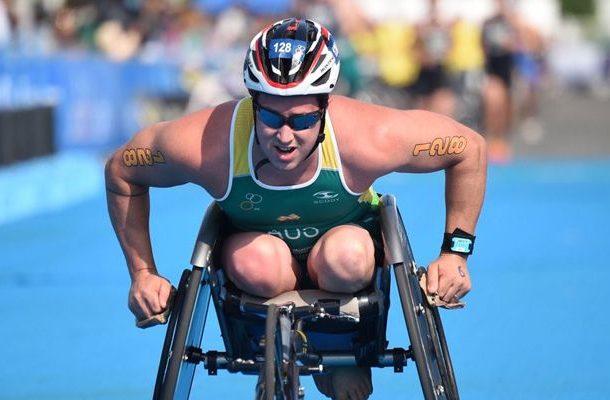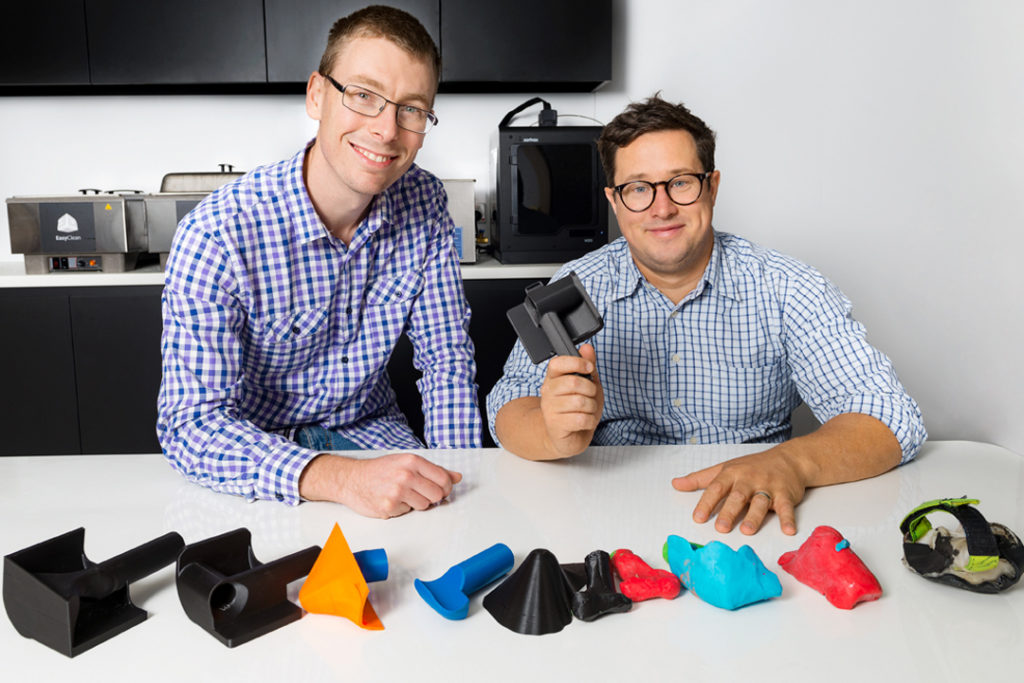3D printed gloves give triathlete a Commonwealth Games push

When the gun went off to start the Commonwealth Games sprint paratriathlon, South Australian athlete Scott Crowley hoped he would have an advantage thanks to winning a completely different competition last year in Adelaide.
Scott and his wife Clair won a place at the University of Adelaide’s co-working space ThincLab for their business idea of creating an accessible travel directory for people with limited mobility.
Scott, who was paralysed in a snowboarding accident 15 years ago, has competed around the world in wheelchair basketball and triathlon.
His travels showed that a lack of information about accessibility stopped many people from travelling independently, which sprouted the idea for the couple’s The Good Scout business.
Winning a place at ThincLab gave the couple access to mentors and business advice for their new company, but it was a casual conversation in the co-working space that may help Scott succeed in the inaugural paratriathlon at the Commonwealth Games.
Scott was chatting to Morgan Hunter, the TechLab manager and 3D engineer in charge of ThincLab’s 3D printers, when Morgan asked him about how he managed to push his way through the course. Scott described how for the wheelchair final leg he used self-made gloves to hit the top of the tyres on his track chair to propel himself forward.

ThincLab engineer Morgan Hunter (left) has helped triathlete Scott Crowley develop 3D-printed wheelchair gloves he will wear in competition at the Commonwealth Games.
“Scott told me that he bought a kit that basically came with plastic beads that he melted down and formed to his hands,” says Morgan.
Being an engineer, this bothered Morgan.
“I thought, ‘that’s just crazy, there is no way that he could get the right shape and he must burn his hands’.”
Morgan had Scott bring in his gloves to see how they could produce something better.
“First up I found that there was a 50 gram difference between the right and left glove,” says Morgan.
“So we modelled something different in plasticine, scanned it and digitised it in CAD and printed samples in the 3D printer.”
After two months of development the pair had designed an entirely new device for Scott.
The final design was printed with Onyx carbon fibre reinforced plastic, shaving 145 grams off each glove, a massive weight difference when competing over longer distances. The gloves, which look like pistons that Scott can grab with his fist, cost around $100 each.
Morgan then printed two pairs, a wet weather version with an abrasive face to stick to a wet tyre and a dry weather version that has a rubber face.
“This is the first 3D printed glove I’ve ever had. It’s custom to my hand – it’s very light but still very strong, and it’s consistent. It’s good to have that consistency of shape,” Scott says.
“So far the new gloves have performed excellently, much better than my normal gloves. Because they’re light, they also help with recovery time. I’m definitely happy with the outcome,” he says.
Morgan says ThincLab’s prototyping lab and design studio is open to anyone looking to develop a product and offers a competitive rate that includes access to the University of Adelaide’s expertise in engineering.
Jim Plouffe is an award-winning Senior Manager with a wide range of experience working with diverse teams to meet both editorial and business goals. He is currently the Publishing Editor at NewsLeads.








